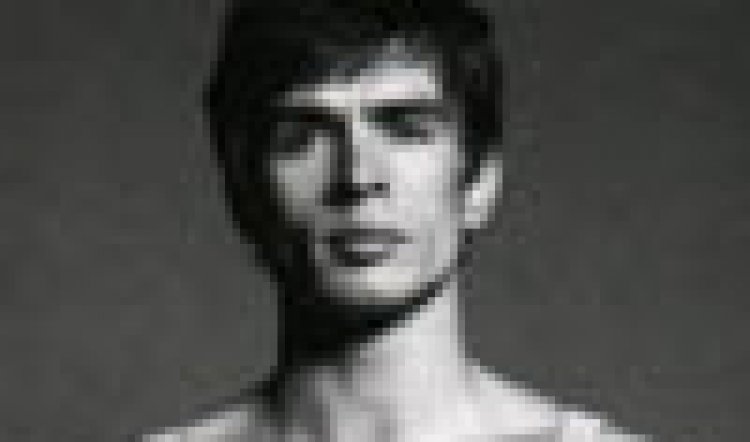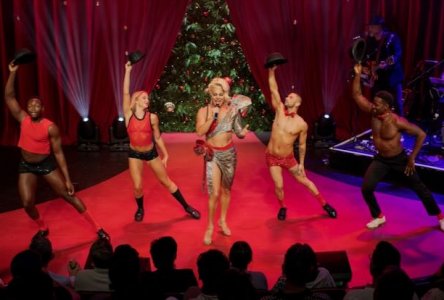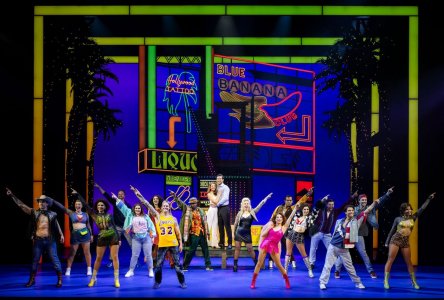
Rudolf Nureyev
Rudolf Nureyev by Julie Kavanagh, Penguin, $59.95
Several international reviewers have already commented on how appropriate the term monstre sacre is to describe the particularly extreme personality and talents of Rudolf Nureyev, as documented in Julie Kavanagh's exhaustive new biography.
It is a convenient label, but it does not go far enough or really do justice to the complexity of this multi-faceted personality. Kavanagh is not content with catch phrases or clichés. Over a period of ten years, she undertook the most rigorous research, blessed with A-grade access thanks to her credentials as the biographer of English choreographer Sir Frederick Ashton. She wasshown never-before-seen papers and letters, and funded to undertake the monumental work in part by the Nureyev Foundation. Nevertheless, that this is essentially an authorised biography does not weaken its impact or honesty.
Doors were opened to Kavanagh not only in Europe and the US but in Russia too, perhaps because now, as with Tina Brown's analysis of Princess Diana, enough time has passed for some of the pain and bitterness to subside.
As a member of the dance tribe - she trained at the Royal Ballet School - Kavanagh, not only knows the physical and artistic demands required, but also recognises the significant cultural and stylistic differencesbetween companies such as the Kirov, where Nureyev began his career, to the Paris Opera Ballet, where it more or less ended. I don't know what she was like as a dancer, but her writing style is pert, conversational and lively.
A reader not fluent in dance terminology or familiar with the ballet repertoire may at times feel swamped by technical information. No matter how many times Kavanagh referred to it, for instance, I never really understood what "epaulement" is, or why this emphasis on the upper half of the body was so significant for some classical ballerinas and not for others. A glossary of dance terms would have been helpful (or diagrams). Similarly, there is a frustrating description of certain dance moments and social occasions which one longs to see: the photographs in the book are simply insufficient given the charisma and magnetism of its subject.
But this is carping. Rudolf Nureyev is a definitive biography of both man and artist, sexual predator and performance addict. Blessed with prodigious talent and insatiable appetites, Nureyev was enslaved to both and dragged others along in his wake. Not everyone could keep up or go the distance.
The book is at its strongest in depicting the intimacy of Nureyev's formative relationship with his mentors, Xenia and Alexander Pushkin, who took him into their house (and bed) and taught him everythingthey could to set him on his path. An innocent first love with fieryCuban dancer, Menia Martinez offers a touching counterpoint to later amorous affairs, before it all got complicated.
Though she clearly worships her subject, Kavanagh never shies away from acknowledging his arrogance or unreasonable demands. She is particularly fair and sympathetic in dissecting the Royal Ballet's intense feelings of resentment when the stellar billing of Fonteyn and Nureyev eclipsed all others, as it did during the fiasco of the casting for Kenneth Macmillan's Romeo and Juliet. Originally created on Lynn Seymour and Christopher Gable, neither dancer ever fully recovered from being displaced.

Thanks to extensive conversation with primary sources such as Mikhail Baryshnikov, she is also able to provide us with a sense of how Nureyev kept in touch with Russian friends and colleagues via back channels until he was able to return home, his powers faded. (It is hard to believe, now, how dramatic and dangerous was his "defection" from the touring Kirov Ballet and escape from KGB scrutiny in 1961 at Le Bourget airport in Paris.) By the time the break-up of the Soviet Union made a homecoming possible, it was too late for him, both as a dancer and as a son. He was, in the end, Russian to the very last, to the depth of his tormented, voracious, venal soul. What is most admirable in his temperament is his absolute hunger to learn, to embrace the new and to take risks. His legacy as a choreographer may be questionable, despite some significant triumphs but those who saw him dance at his best knew they were witnessing a star unrivaled in the heavens.
The cast of characters in this relentlessly gripping drama (sometimes as gossipy and bitchy as soap opera) is huge, yet Kavanagh keeps a tight rein on her narrative, although sometimes providing perhaps just a little too much detail of every tantrum, squabble and row that Nureyev ever had with friends, lovers, stage partners and hangers on. He could behave like a brute oneminute and an angel the next. (Dropping dance partners is the least of it - film director Franco Zeffirelli probably copped some of the worst behaviour when Nureyev, feeling snubbed, smashed his collection of maiolica.)
Most vivid are Kavanagh's portrayals of Nureyev's fabled dance partner, the English prima ballerina assoluta, Dame Margot Fonteyn. At once steely and giggly, Fonteyn was a constant throughout his life from their first meeting in 1962. (Kavanagh fence-sits on the did-they-or-didn't-they question, but leaves no doubt as to the depth of their love for one another.) By comparison, Nureyev's cool lover, the patrician Danish dancer Erik Bruhn, was scalded and forever scarred by getting too close to the flame; while Wallace Potts, an American who met Nureyev on the set of the film version of Don Quixote on which he was first assistant director, proved himself a devoted companion well beyond the call of duty (and was archivist of the Nureyev Foundation).
Nureyev had a mostly positive experience when he joined the Australian Ballet to stage Don Quixote, even though filming the production in an aircraft hangar at Essendon in sweltering temperatures proved hellish for cast and crew. They worked 16 hour days at the suburban Melbourne airport while the painted melted on the floor. Always striving for authenticity, Nureyev, as co-director of the film with Robert Helpmann, insisted on hiring stall holders from the Queen Victoria Market to fill out the crowd scenes of vegetable sellers. While others wilted in the heated, Nureyev remained as impatient as ever under their three week deadline, dragging principal dancer Gailene Stock across the stage by her necklace when she wasn't ready. In Helpmann, though, he had met his match in stature and ego, not to mention their shared talent for nostril flaring.
Nureyev's final years, denying the toll AIDS was taking on his body, dancing with a fever and collapsing into the wings, are immensely moving and harrowing. He was often lonely, like Princess Diana and other superstars whose intimate relationships fell by the wayside while they were adored from afar by millions.
For anyone lucky enough to have seen Nureyev dance in the flesh, this book will help recapture some of the thrill that experience could generate. For those who never saw him on stage, but only on film, this book enhances themagic without adding to the distortions of myth. Butto really understand how one man could, just by standing, draped in a velvet cape at the side of the stage, generate enough heat and light to put everyone else in the shade, you really had to be there.


-c444x300.jpeg)
